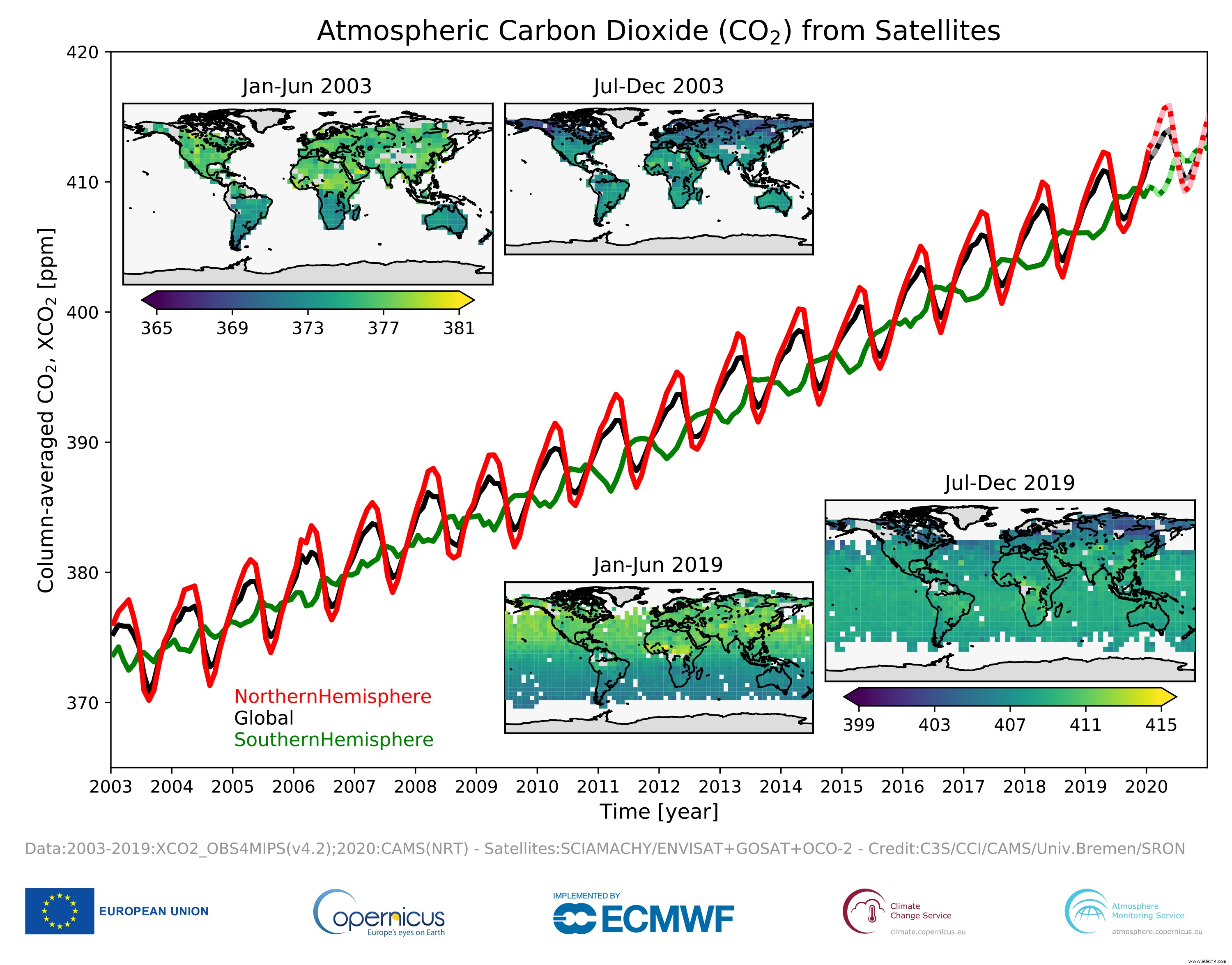On the sidelines of COP26, the European Union's Copernicus atmosphere monitoring service is working on the development of new satellites to measure its progress towards achieving the goals of the Paris Agreement.
Under the Paris Agreement, signatories are required to formulate climate action plans and pursue mitigation actions to achieve these contributions. Signatory States should regularly report on their progress. However, at present, there is no internationally recognized capability to monitor trends in anthropogenic emissions using atmospheric measurements. That's about to change.
The Copernicus Atmosphere Monitoring Service (a European Union project), together with the European Space Agency (ESA), is currently working on the development of a constellation of satellites called European CO2 Monitoring and Verification Support Capacity (CO2MVS for short) aiming to track anthropogenic greenhouse gas emissions from space .
The announcement was made this Tuesday, November 2 on the sidelines of the United Nations Conference on Climate Change (COP26) currently being held in Glasgow (Scotland). This constellation should be operational from 2026 .

Instruments currently available in orbit currently measure changes in atmospheric carbon dioxide concentrations primarily related to natural variations in the carbon cycle. As such, they cannot identify individual industrial sources. Project officials say new constellation could be "game changer" by allowing climatologists to identify individual sources of GHG emissions , such as power plants and fossil fuel production sites.
"Once in orbit, the satellites will take care of measuring the concentrations of the two most common greenhouse gases, carbon dioxide and methane, with unprecedented, near real-time detail “, program representatives said in a statement. Remember that while it represents only about 16% of global greenhouse gas emissions, methane is eighty times more powerful than CO2 to warm the Earth's atmosphere.
Finally, the Paris Agreement requires signatory countries to take stock of progress made every five years to ensure that each is on track to achieve her goals. The first analysis of this type should be completed by 2023. These new satellites will therefore be able to support and refine the 2028 reports .